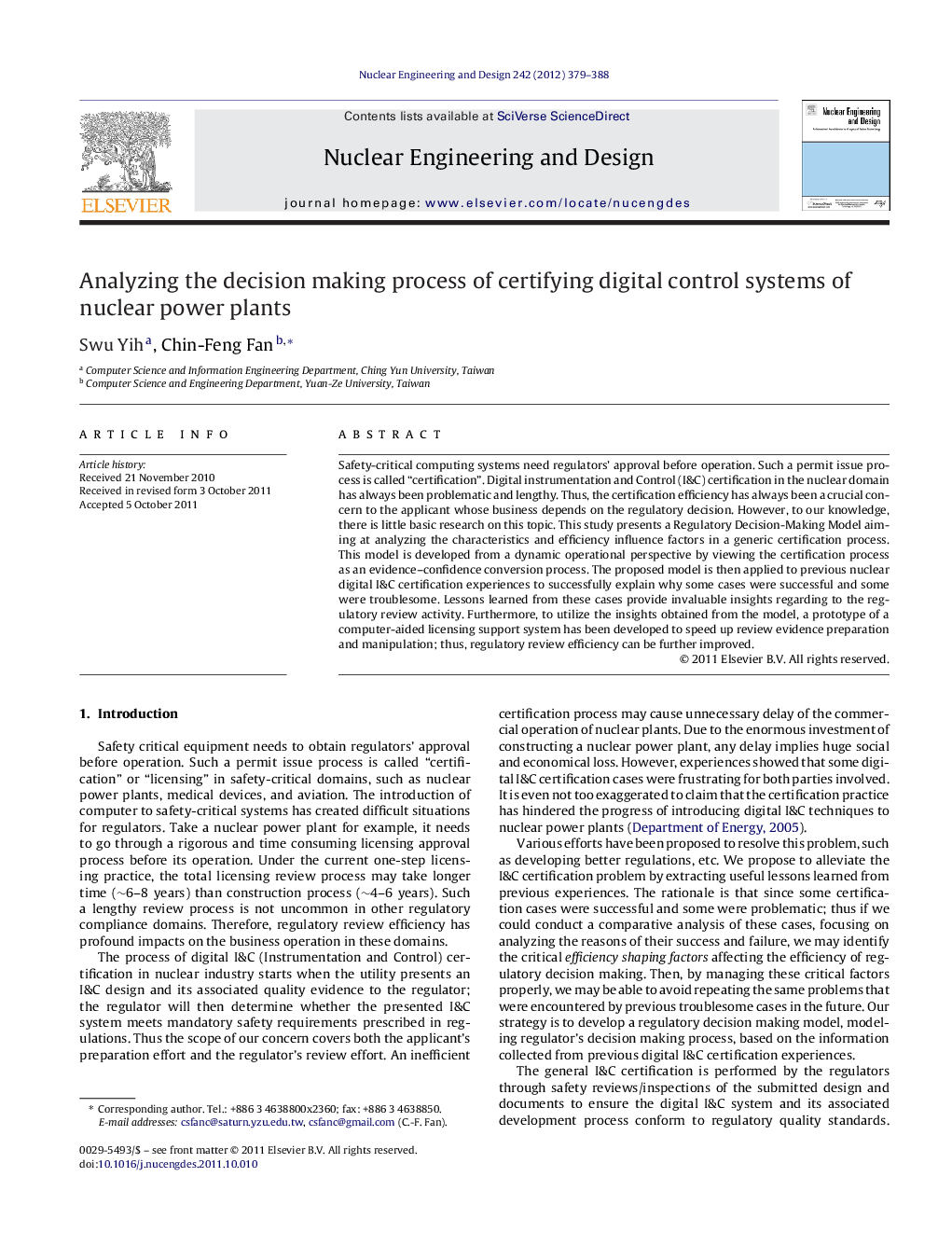| Article ID | Journal | Published Year | Pages | File Type |
|---|---|---|---|---|
| 297367 | Nuclear Engineering and Design | 2012 | 10 Pages |
Safety-critical computing systems need regulators’ approval before operation. Such a permit issue process is called “certification”. Digital instrumentation and Control (I&C) certification in the nuclear domain has always been problematic and lengthy. Thus, the certification efficiency has always been a crucial concern to the applicant whose business depends on the regulatory decision. However, to our knowledge, there is little basic research on this topic. This study presents a Regulatory Decision-Making Model aiming at analyzing the characteristics and efficiency influence factors in a generic certification process. This model is developed from a dynamic operational perspective by viewing the certification process as an evidence–confidence conversion process. The proposed model is then applied to previous nuclear digital I&C certification experiences to successfully explain why some cases were successful and some were troublesome. Lessons learned from these cases provide invaluable insights regarding to the regulatory review activity. Furthermore, to utilize the insights obtained from the model, a prototype of a computer-aided licensing support system has been developed to speed up review evidence preparation and manipulation; thus, regulatory review efficiency can be further improved.
► We have performed basic research in analyzing certification process and developed a regulatory decision making model for nuclear digital control system certification. The model views certification as an evidence–confidence conversion process. ► We have applied this model to analyze previous nuclear digital I&C certification experiences and obtained valuable insights. ► Furthermore, a prototype of a computer-aided licensing support system based on the model has been developed to enhance regulatory review efficiency.
